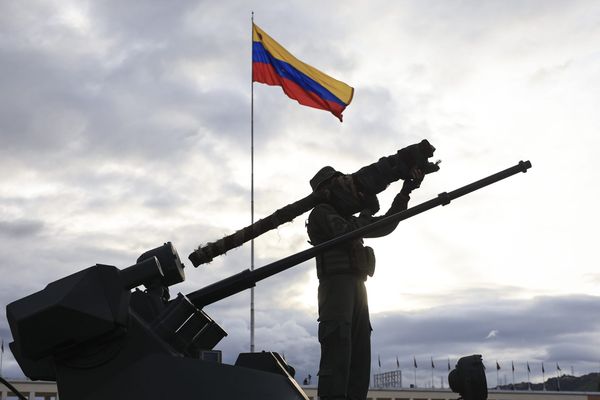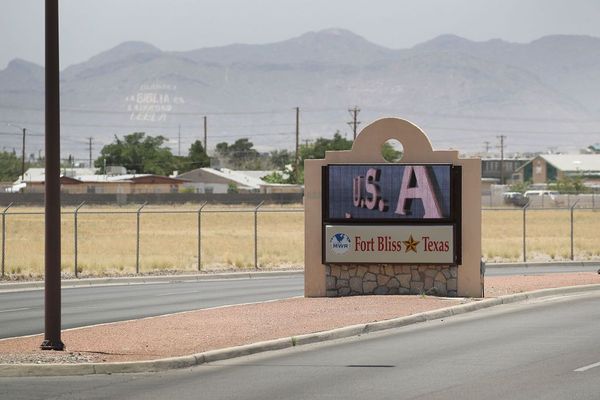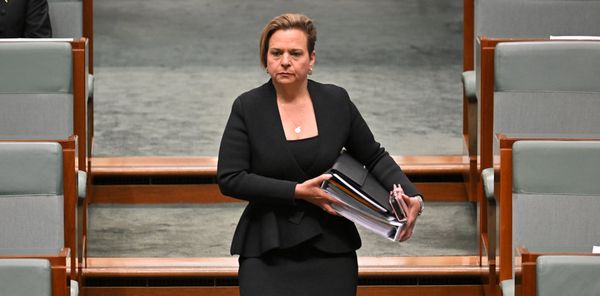Set in Paris, director Boris Lojkine’s latest film follows Souleymane (an astonishing turn from Abou Sangaré), seeking asylum in France as an immigrant from Guinea. Through Souleymane’s eyes, Paris becomes a gritty, unforgiving landscape of danger, fragility and relentless bureaucracy.
First-time actor Sangaré won best actor in Un Certain Regard at the 2024 Cannes Film Festival, and the 2025 most promising actor César (the French equivalent of the Oscars) for the role. In the opening moments of the film, it becomes clear why.
The first scene follows Souleymane into a waiting room. Nervous and tense, he captures the audience’s attention with only a few gestures and fleeting expressions. Sangaré’s performance is raw yet remarkably restrained, suffused with the kind of vulnerability that makes it impossible to look away.
The story then jumps back to the days leading up to this moment, later revealed to be Souleymane’s interview with the French government department that deals with immigration.
Souleymane works as a bicycle delivery driver in the city. As he has yet to receive his work permit, he is forced to rent his driver’s app account from an acquaintance, Emmanuel (Emmanuel Yovanie), who demands a large portion of his earnings.
This arrangement becomes a constant source of tension. Each time the app requires a selfie to verify the driver’s identity, Souleymane must race to Emmanuel for this photo. What should be a simple act of work turns into a daily negotiation with technology, bureaucracy and fear. Through these moments, the film exposes just how precarious and punishing it is to earn a living without legal recognition.
Souleymane’s Story rejects the “good immigrant” trope, which can characterise immigrants as saintly and non-threatening. Instead, Souleymane is a complex, fully realised character.
In his bid for asylum, he fabricates elements of his story, an act that weighs heavily on him. Unaccustomed to deceit, he struggles to keep his story straight, his faltering memory exposing both his honesty and exhaustion. These moments are quietly devastating, revealing the emotional toll of having to shape your life into something acceptable to the system.
As Souleymane rushes through Parisian traffic, the camera is intimate and unrelenting. Every swerve and every near miss with traffic is filled with tension and exposes Souleymane’s vulnerability. Naturalistic performances, ambient sounds and muted light combine to create something wholly lived-in, almost documentary in texture.
While respected among his fellow asylum seekers and delivery drivers, again and again Souleymane is met with hostility from restaurant owners and customers. Through these encounters, the film lays bare the harsh unregulated world of gig-economy labour, where human value is reduced to speed, ratings and availability.
Despite its bleakness, this film has a striking vibrancy. Souleymane moves constantly through the city, across bridges, through underpasses, down crowded boulevards. Paris is a living, breathing, shifting presence, alternately beautiful and brutal. The rhythm of his movement gives the story its pulse, a visual and emotional energy which captures both the isolation and the momentum of survival.
With an unflinching portrayal of modern bureaucracy, Souleymane’s Story exposes how fragile life becomes when every decision that governs it is made by an algorithm or an overworked official.
When the delivery app locks him out, Souleymane calls the helpline to be told he will receive an email “in two days”. The voice on the phone tells him that she cannot tell him why. Later, in his asylum interview, the sound of the interviewer’s keyboard becomes its own symbol of bureaucracy, each keystroke a reminder that her typing will determine whether he is allowed to stay or forced to leave. The film raises the haunting question: how much suffering must one endure to be deemed worthy of safety?
This is a question which feels especially urgent in 2025, a year defined by deepening divides over migration, precarious work and belonging. Without ever turning didactic, the film captures the quiet devastation of those caught in the machinery of modern systems, making it both a personal tragedy and a mirror held up to the times. This is cinema that confronts: humane, politically astute and hauntingly real.
Looking for something good? Cut through the noise with a carefully curated selection of the latest releases, live events and exhibitions, straight to your inbox every fortnight, on Fridays. Sign up here.
Laura O'Flanagan does not work for, consult, own shares in or receive funding from any company or organisation that would benefit from this article, and has disclosed no relevant affiliations beyond their academic appointment.
This article was originally published on The Conversation. Read the original article.







